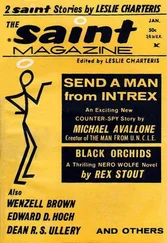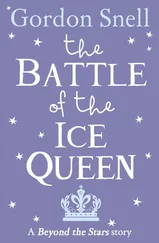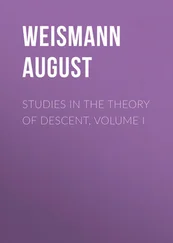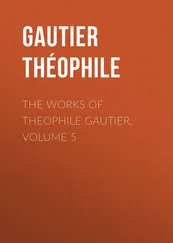« Kon na luva-na! » The priest’s command rang through the hall and all men obeyed without hesitation. They dropped their clothes, remaining only in masks, and returned to their previous poses complete bare. Then, as if by a silent command, the warriors launched a monotonous guttural sound: hmm-m-m-m-m-m, hmm-m-m-m-m-m .
Tolana also made a move to shake off her cloak embroidered in coloured threads, but Balama’s gesture made her stop and she immediately returned to the table where she remained in the same humble posture, head bowed down and hands clasped in front of her. Her voice joined the chorus of the warriors. The sound echoed loudly between the walls and continued in eternal echoes.
For there to be a woman in the temple, the holy of holiest of the tribe, on top of the pyramid Kukulcan, was unusual. This was actually the first time in the history of the tribe. At least Kuluangwa, sitting on his knees at the table, could not recall a single previous time when the Chaak-Chaya ritual was attended by a woman. Not once, neither his father nor grandfather, have ever told him anything like this. Tolana did not enter properly but crept into the temple on all fours and only after the priest’s permission could she stand up in full growth.
Vak Balama again stepped into the shadows, arms folded on his chest, and for a while silently and sullenly watched the kneeling naked warriors. Tolana occasionally frowned nervously, trying to keep her back straight and not pressing her stomach against the cold surface of the table. The priest could see that in a few more weeks the body of this woman will bring another fruit to the tribe. This bothered Balama the most. In his plans, women were designed for an entirely different purpose. They were among the most important instruments in the sacrifice-bringing of the tribe when it was required to propitiate the angry gods. But not here, not now – at top of the pyramid. Not in the temple, and not with a new unit of ball players. Later, in a few days… it will be a special occasion.
Usually, the chosen victims were virgins, and Tolana of course no longer fit this category. Virgins were usually sacrificed as follows: three-to-six girls were washed in hot stone baths, their bodies were rubbed in oils of special plants, and then the priest would exercise his control over the innocent girls in front of the raging mob. After that, the priest’s assistants would dress the poor girls in beautiful clothes and gold jewelry. All of the girls received a ritual drink, and soon – in just a few minutes – the girls plunged into their first and last trance.
The secret of this drink had long been passed down through generations of priests by inheritance and was certainly known only to the leader and the high priest of the tribe. The secret of the potion lay in its duality. Two drinks were mixed not to complement each other, but to simultaneously deny each other in the human body. Alcoholic tincture from selected cactuses was mixed in undisclosed proportions with a squeeze of water lilies. The cactus extracts increase the drinker’s mood, the tone of the whole body, and blood pressure. The extract of lilies caused severe hallucinations and dramatically lowered blood pressure. Balama always prepared the drinks himself, not allowing even his closest aides to witness the process.
As a rule, the young victims’ hearts could not withstand the conflicting ingredients present in the drinks and the girls died, plunging into hallucination, apathy, and afterlife. In their final paths, the girls’ bodies, richly dressed, decorated, and painted with colourful tattoos and intricate patterns, were carried by male warriors. The warriors, leading the procession and being followed by the entire tribe, threw the dead girls down into the Cenote – the lakes of sacrifice, hidden in deep sinkholes.
One of the cenotes was at Chichen-Itza, to the north of Tzompantli – the plateau of Eagles and Jaguars. Another Cenote was at Chtuloq, right in the heart of the city, near the main well. These two Cenotes failed to produce fresh water for a long time and filled once a year by torrential mid-spring rainfall, although to less than half their height. Then the water began to blossom and became suitable only for the irrigating of cornfields, which began just behind the Northern temple and the field for ball games.
Now, the tribe’s cornfield was dead. Studded with dry stem shoots that barely rose above knee-level and burned under the hot sun, the cornfield terrified the whole tribe.
Vak Balama’s last offering was made four full moons ago. The gods wanted blood only at full moon. Today was a full moon and the gods demanded new blood. This was also indicated by the three stars of the Three Holy Warriors, which lined up with another star, the brightest and most beautiful star of the Queen of Water. And the Sun of the God Chaak stopped and froze under this sign for several hours without movement, before lowering the world into the realm of darkness and coming back the next morning. This only happened once a year, on December 21. This would be in twenty days from now.
However, the strange occurrence that happened at the Sacred Cenote of Chichen-Itza six full moons ago identified the sacrificial rites in a whole new way.
The Cenotes used to be full of cold spring water at a depth of several dozen metres. They had several cunning outflows through a variety of underground caves into the salty Caribbean Sea. Today, the Cenotes were shallow and dry. Besides the fact that they took in the sacrificial victims whose bodies were eventually carried by the water through the underground rivers flowing into the sea, the sinkholes were the only sources of fresh drinking water.
The bodies of the six latest sacrifices were not carried anywhere by the water. They remained lying in small ponds, like beautiful gilded puppets. Buckets were dropped into the wells on long ropes woven from the bark of trees, but the water from these sources was not drinkable anymore. Twitching from the smell, one of the residents took a few timid sips, immediately threw up, and the next day he became one of the first deceased to be carried by citizens to outside the city and buried in stones. The city was entirely without water. There was no rain for six full moons – the same length of time that no sacrifices had been made to the gods by those that wanted to come closer to them through death and enter the Temple of Joy.
Now, when the whole city was quietly complaining of having to take the dead bodies of friends and relatives outside the city walls, the priest decided that the time has come and that there will be no more waiting.
21° 20» 70» N
86° 80» 81» W
Mexico, Yucatan Peninsula
December 14, 1971
The trip to Mexico, which Dalma mentioned in a conversation with her husband, happened just over a year ago, before Christmas. Dalma had strongly insisted that the whole family was to be back home in Buenos Aires for the holy feast. «No exceptions! Otherwise, your things will be in a suitcase at the door!»
At the time, Diego Sr. worked for a small construction company that temporarily employed many seasonal workers who were often quite illiterate and unskilled. They were sent to prepare construction sites, removing trees and debris, building fences, cleaning the beaches, and guarding the area. Diego had worked for the company for a full twelve years, had good skills in construction, laying brick walls, decorating interiors, and even reading blueprints. And most importantly – he knew English, which was necessary for communicating at construction sites abroad. The chief of the firm by now already trusted Diego to manage the construction brigades of a few more or less professional builders and a couple of dozen general labourers. His salary increased and Dalma was grilling the head of the family much less for his meager income.
Читать дальше












